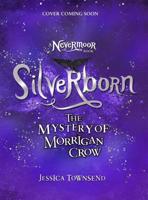Publisher's Synopsis
This historic book may have numerous typos and missing text. Purchasers can usually download a free scanned copy of the original book (without typos) from the publisher. Not indexed. Not illustrated. 1910 edition. Excerpt: ... NOTES The Oregon Trail was first published in the Knickerbocker Magazine, beginning in 1847. Two years later it appeared in book form. The excitement following the discovery of gold in California induced the publishers to change the title to The California and Oregon Trail. In the fourth edition, 1872, the original title was restored. The present edition follows the full text of the original volume of 1849. The edition of 1872 was revised and greatly abbreviated. Parkman's punctuation differs in many respects from our usage to-day, but it has been retained as far as possible. His spelling has also been retained except when wrong or followiig a usage now entirely discredited. CHAPTER I 5. the journey to Oregon and California. From Independence and Westport, Missouri, northwest and southwest led two great trails. The Oregon Trail ascended the Platte River to the Rocky Mountains, where it followed the famous South Pass between the Rocky and Wind River Mountains. From this Eoint it descended the Snake River and the Columbia to the eart of Oregon country. Northwest of Great Salt Lake a branch trail three years after Parkman's trip led the "FortyNiners" to California. The Oregon Trail, in its more than two thousand miles between Independence and Fort Vancouver, presented to the emigrants no signs of civilized habitation except at four trading posts. Parkman reached only the first of these, Fort Laramie. The Oregon Trail was the longest and greatest continuous highway known to history. In places it was more than one hundred feet wide, as can still be seen after many years of disuse. It was not built, but made--explored by traders and carved into a deep furrow by the thousands of emigrants who took advantage of the last great opportunity of...






















